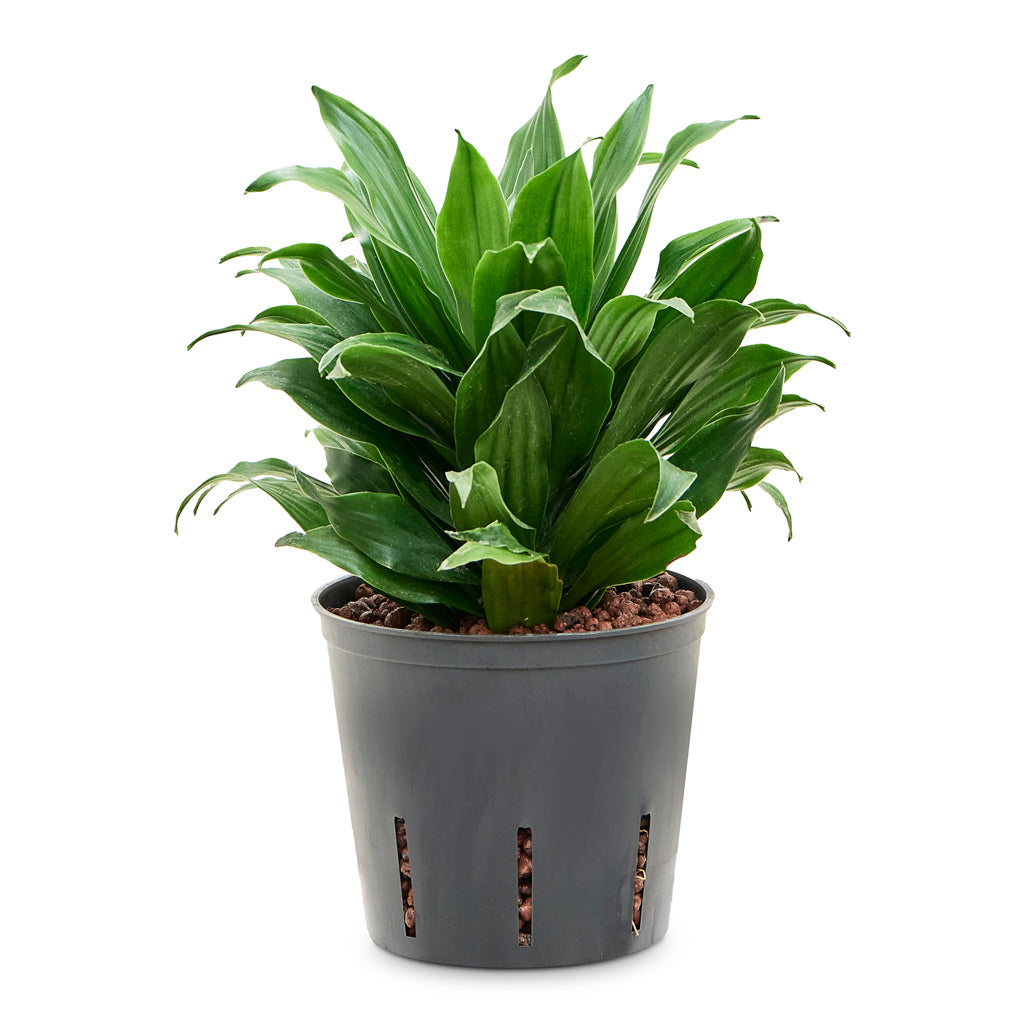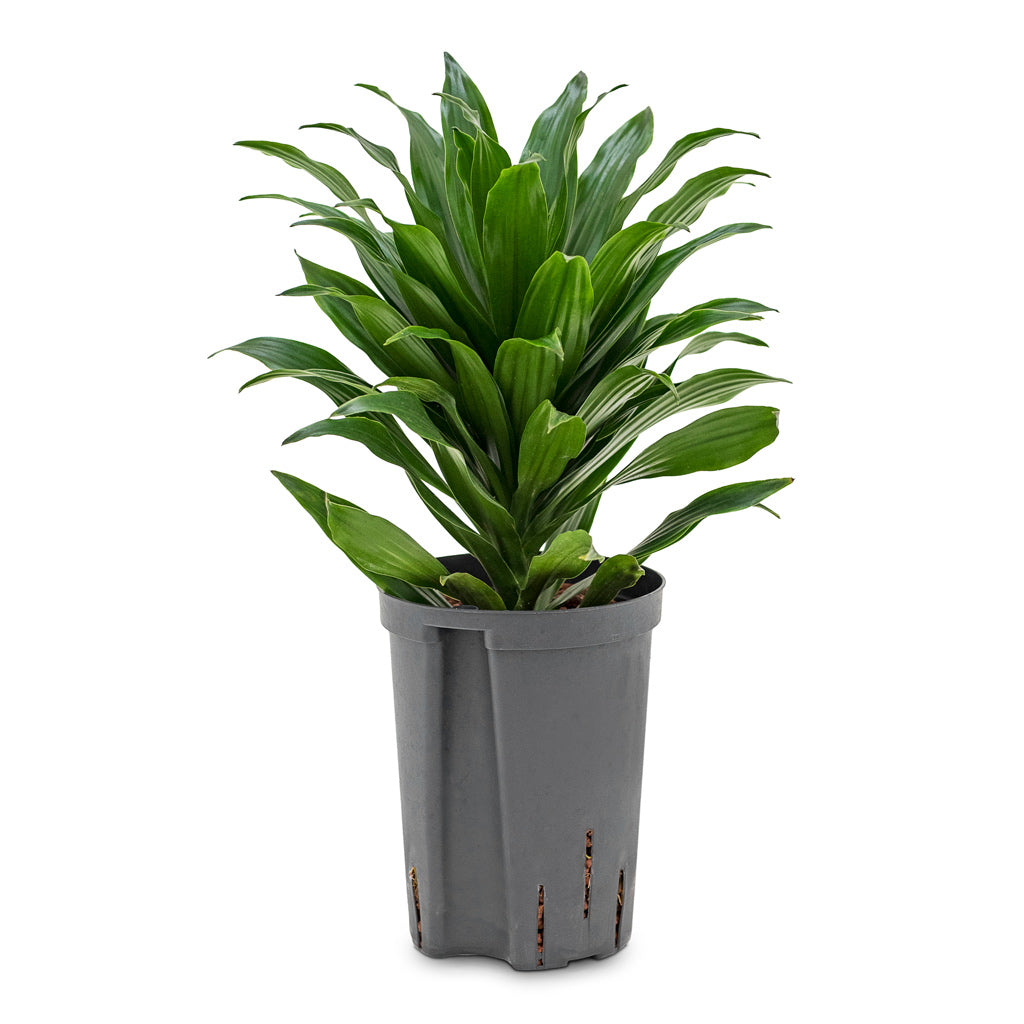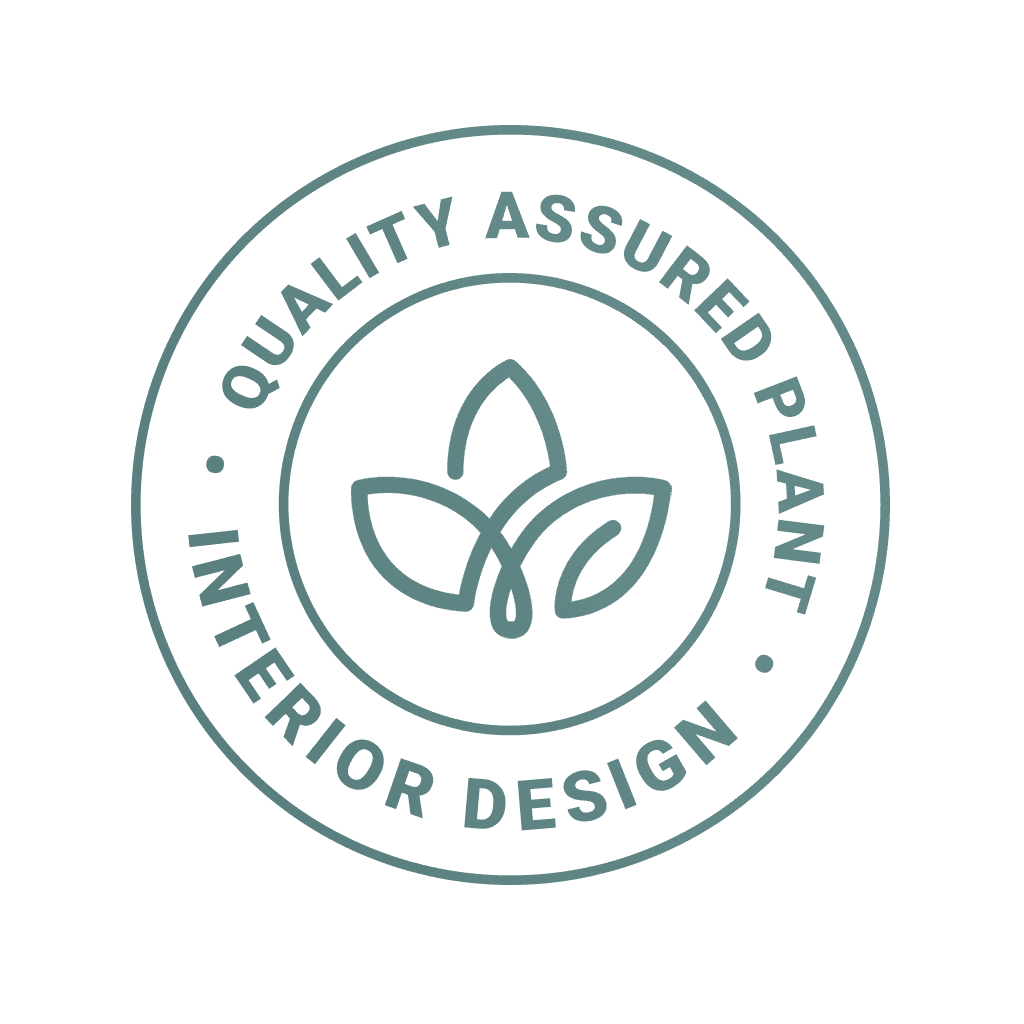



Dracaena fragrans Compacta - Head - HydroCare
£19.99 - £39.95
HydroCare plants are planted in hydrogranules instead of using soil.
Hydrogranules are manufactured from clay pellets that are baked at high temperatures to make them expand, a process a bit like making popcorn.
The open structure of the hydrogranules allows water and nutrients to be stored and released, creating the optimum conditions for indoor plants to thrive as well as simplifying maintenance requirements.















